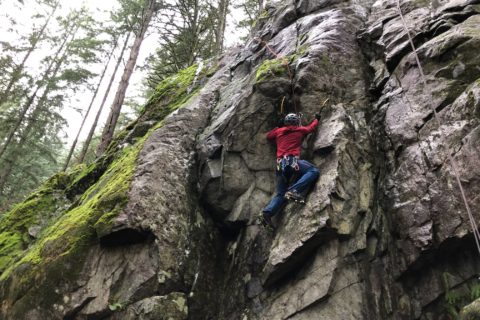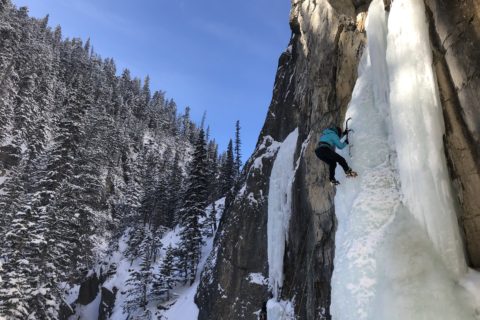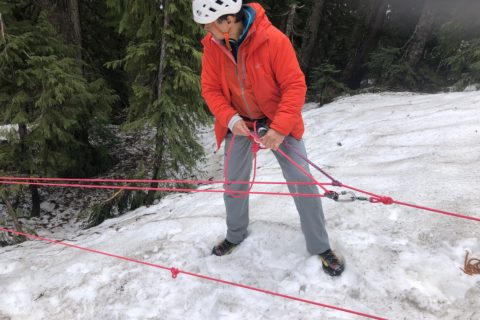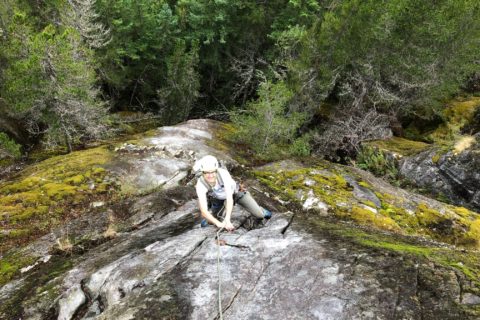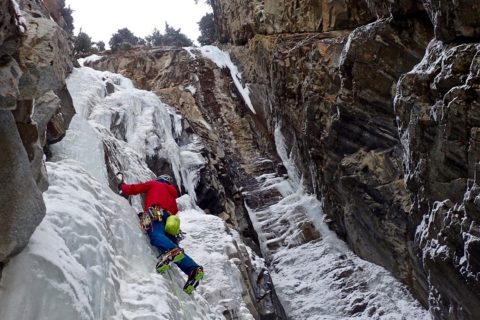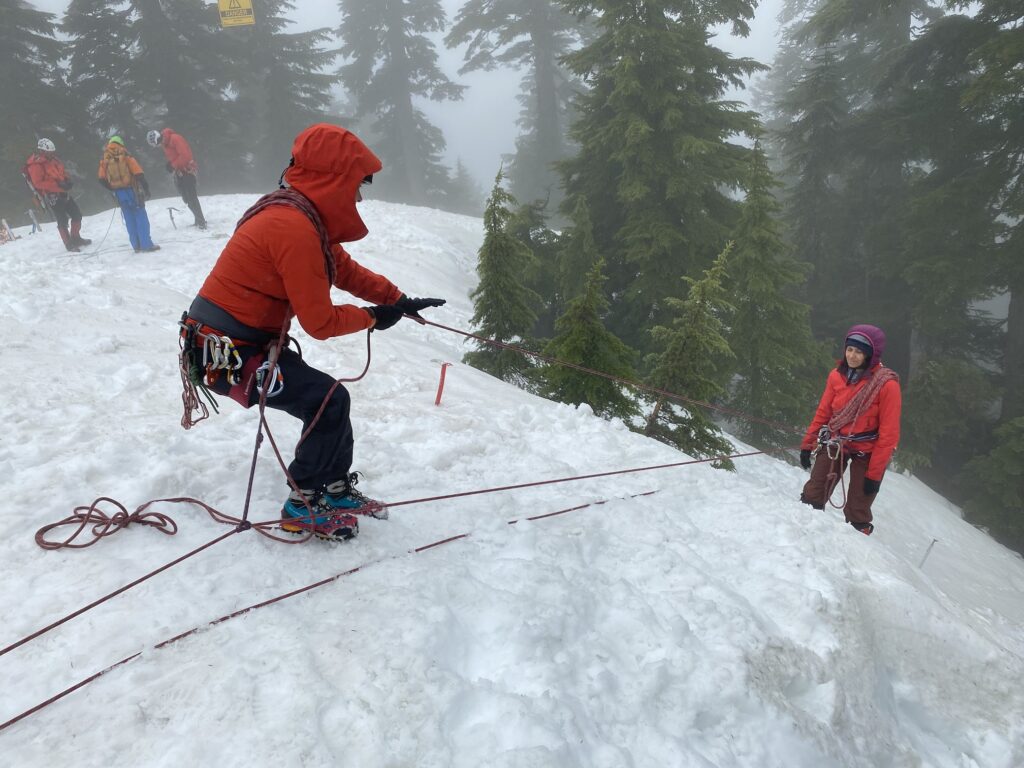
In 2023, I took a break from mountaineering and alpine climbing and focused on trad climbing. But I might do some climbs this year, so I posted a crevasse rescue practice trip on BCMC website. You can read more about my two previous crevasse rescue practice trip reports here: 2021 and 2022.
The practice session was planned for May 26, but due to weather, we postponed the trip to June 1. Initially, we had about 12 people sign up, but as the dates changed, a few people dropped off. Finally we had 8 people for the practice – Oudi, Bala, Neha, Gabby, Shannon, Ben, Wes and myself.
We met at the Mount Seymour Parking Lot at 7 am and started hiking up the (now dry) ski run. The goal was to find an area big enough for two or three rope teams and a nice slope for crevasse rescue practice.

Fortunately, we didn’t have to hike far, and in about 30 minutes, we found a good location. The elevation was about 1050 m, less than 100 m elevation gain from the parking lot. Given the bad winter season (2023-24) and the high temps in May, I was surprised at the snow level on the mountain.
Knots and Rope Spacing
We split into two groups of four. We would practice crevasse rescue in a three-person rope team while one person watched. In our group, we first practiced some knots – overhand on a bight, double overhand, figure eight on a bight and alpine butterfly knots. RMI Guides has a good resource on the basic knots and hitches used in mountaineering.
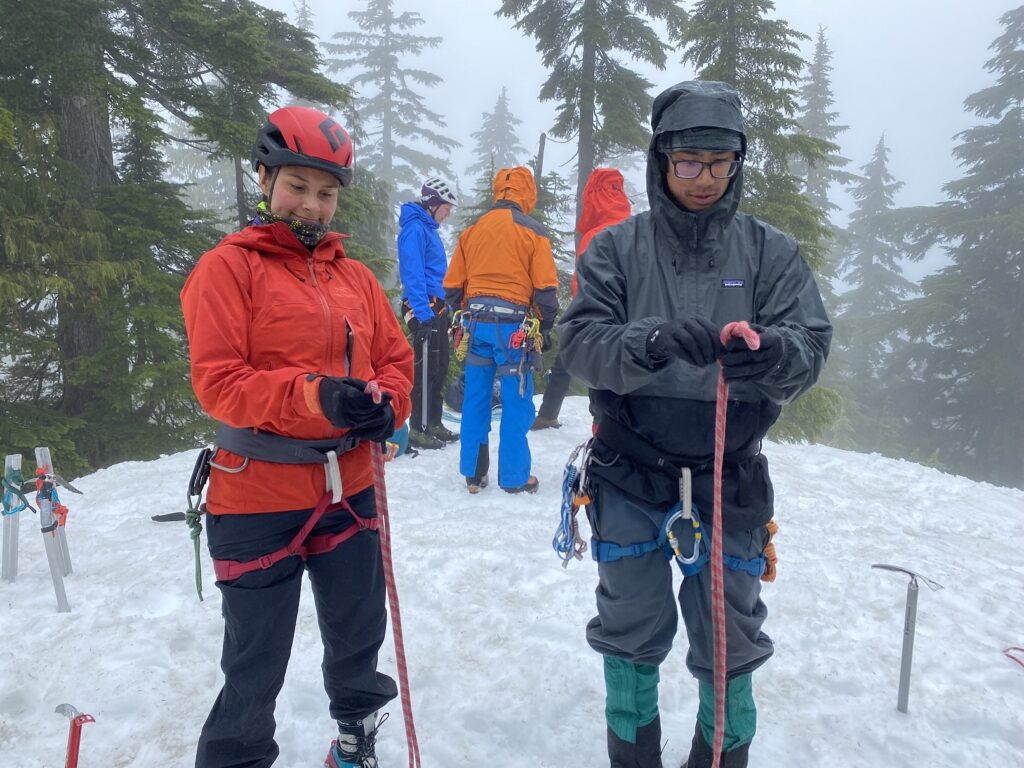
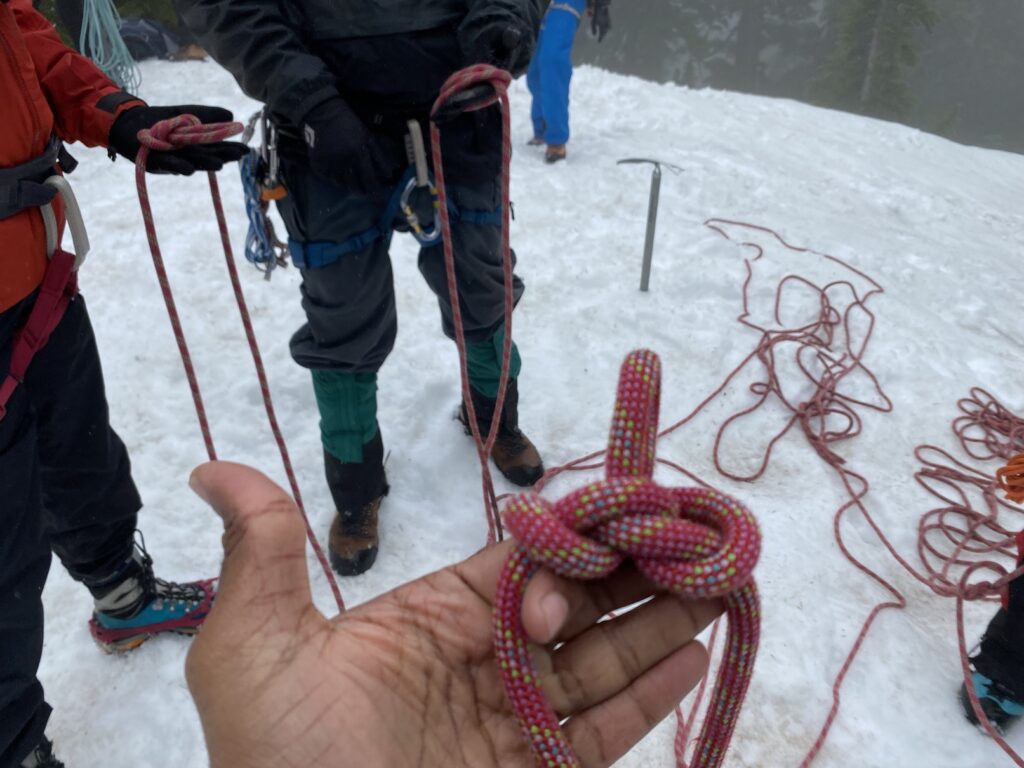
We discussed different approaches to rope spacing: measuring wing spans from the middle vs. the end and the accordion method. My preferred method is the accordion method for a three-person rope team and when we need extra rope (to be coiled) for the end climbers. For our practice session, we shortened the distance between climbers and had more ropes coiled at the end.
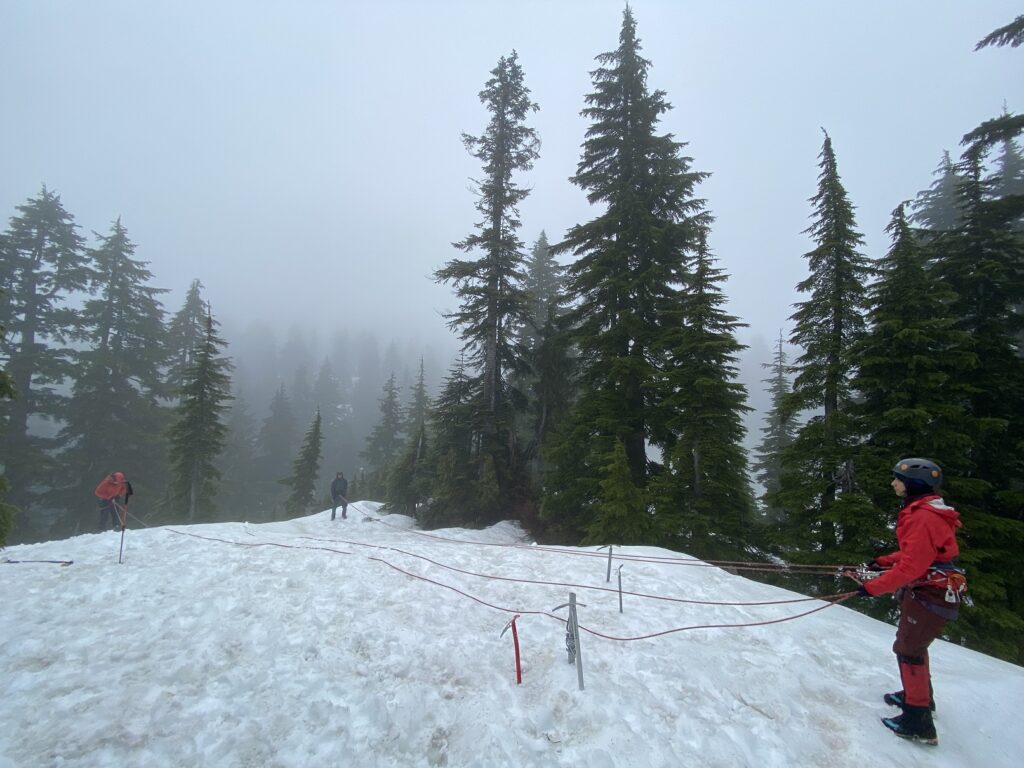
The other group roping up for crevasse rescue practice –
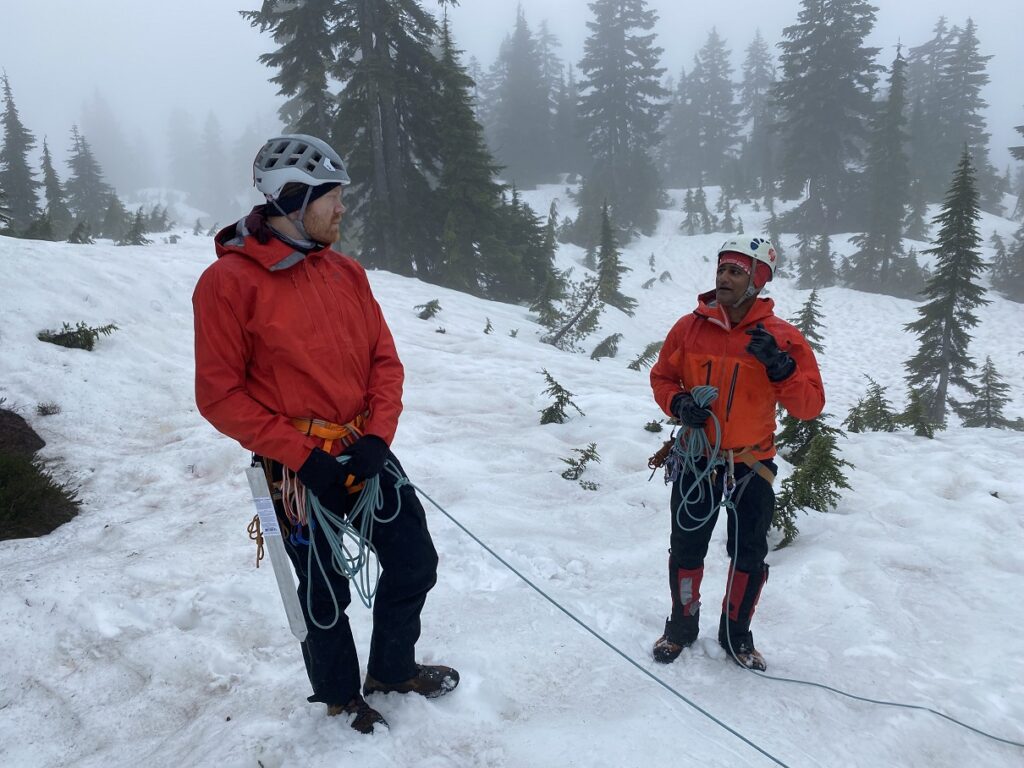
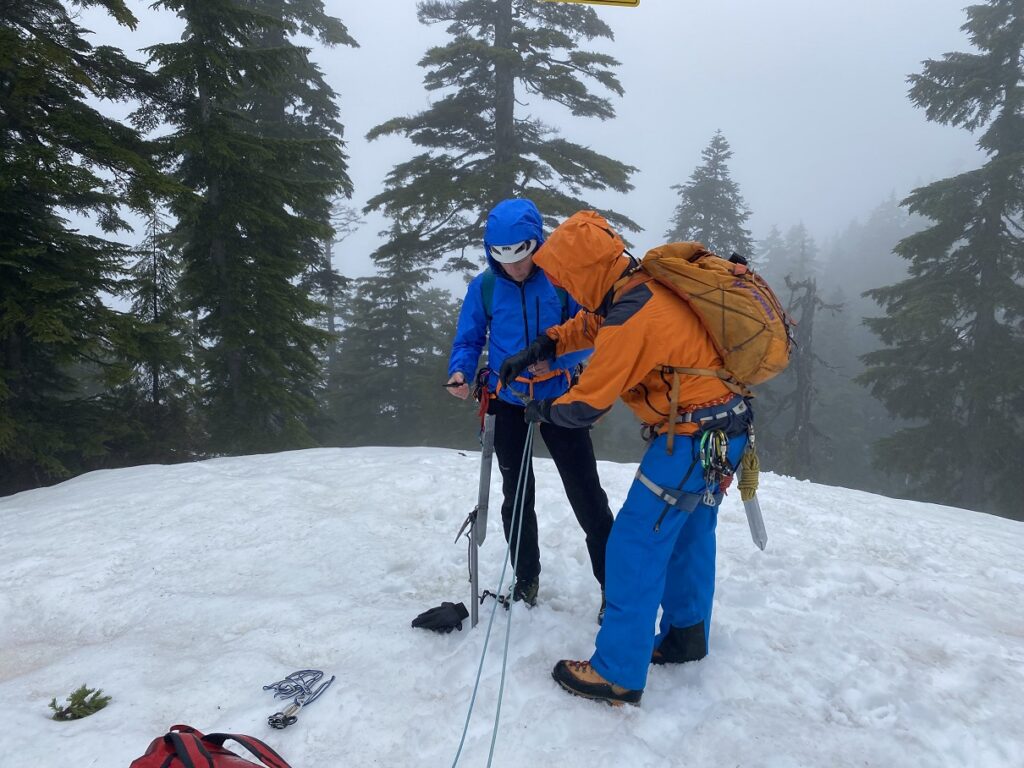
Once the rope spacing was figured out and climbers tied in, we discussed prusiks and tying break knots. For simplicity, we didn’t use break knots in our practice. Later, Oudi shared an excellent video from ENSA Chamonix showing the effectiveness of using break knots –
3:1 (Z) and 5:1 Rescue
In our first round of crevasse rescue practice, Gabby was the fallen climber, Neha was tied to the middle, and Wes was on the other end. As Gabby took a fall, Neha and Wes both self-arrested. Neha communicated with Wes, unclipped herself from the rope (still had the prusik on) and got up to build a t-slot anchor.
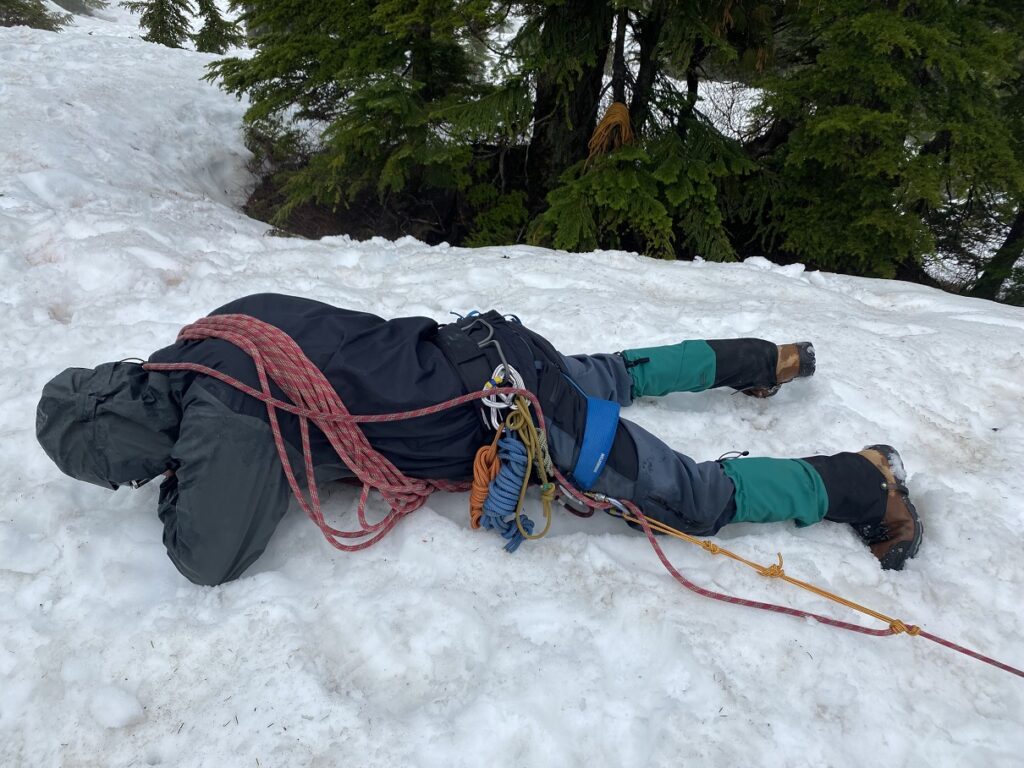
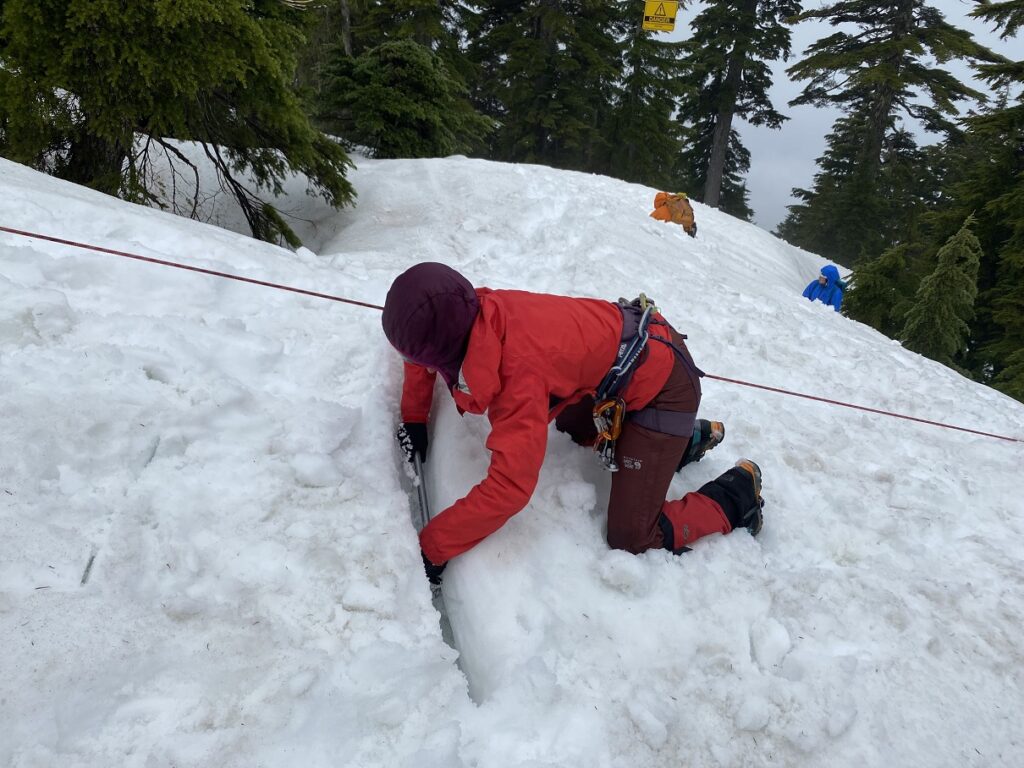
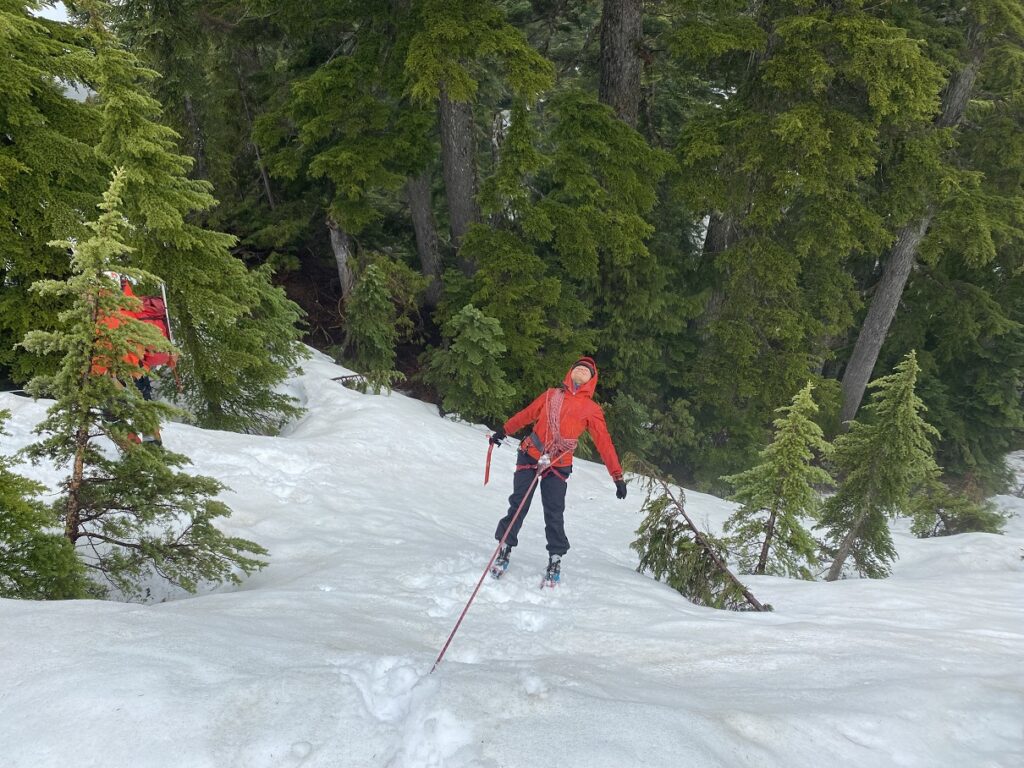
Once she had built a solid anchor, Neha clipped her prusik to the anchor and moved it down the rope until it took the entire load. She then attached herself to the master point with a sling and acted as a backup anchor.
Then Wes got up and prusiked himself first to the anchor and then to the fallen climber. After checking on the climber and preparing the lip of the crevasse with his ice axe, he set up a 3:1 (Z) rescue system using a combination of Petzl Tibloc and Micro Traxion.
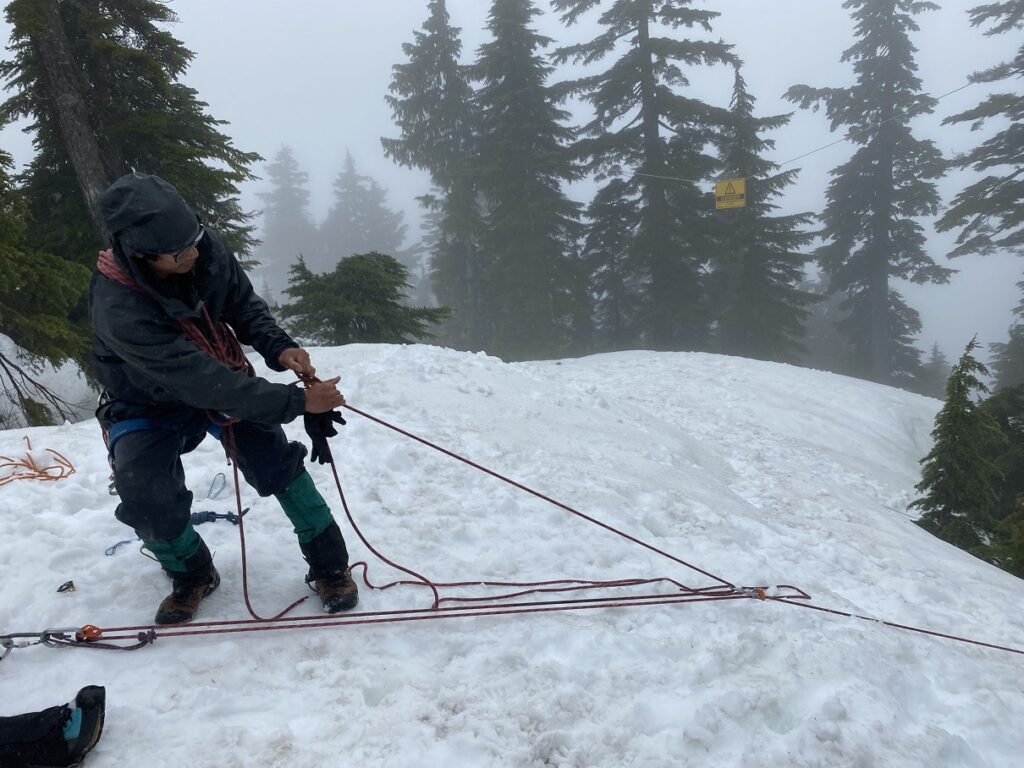
Then he did a redirect using a pulley, pulled some more and finally set up a 5:1 system.
2:1 (Drop Loop/Drop C) and 6:1 Rescue
Next, Wes was the fallen climber, Gabby was in the middle, and Neha was at the other end. Gabby used the same anchor Neha had built and followed the same steps to transfer the load and act as a backup anchor.
Neha initiated a drop loop (2:1) system to rescue Wes. She dropped a loop to Wes with a carabiner and a Micro Traxion. Wes passed the rope through the Micro Traxion and clipped the carabiner to his belay loop. It took some trial and error to get the entire system working correctly, but we finally made it work. Then, Neha upped the mechanical advantage with a 6:1 system using a Tibloc and a pulley.
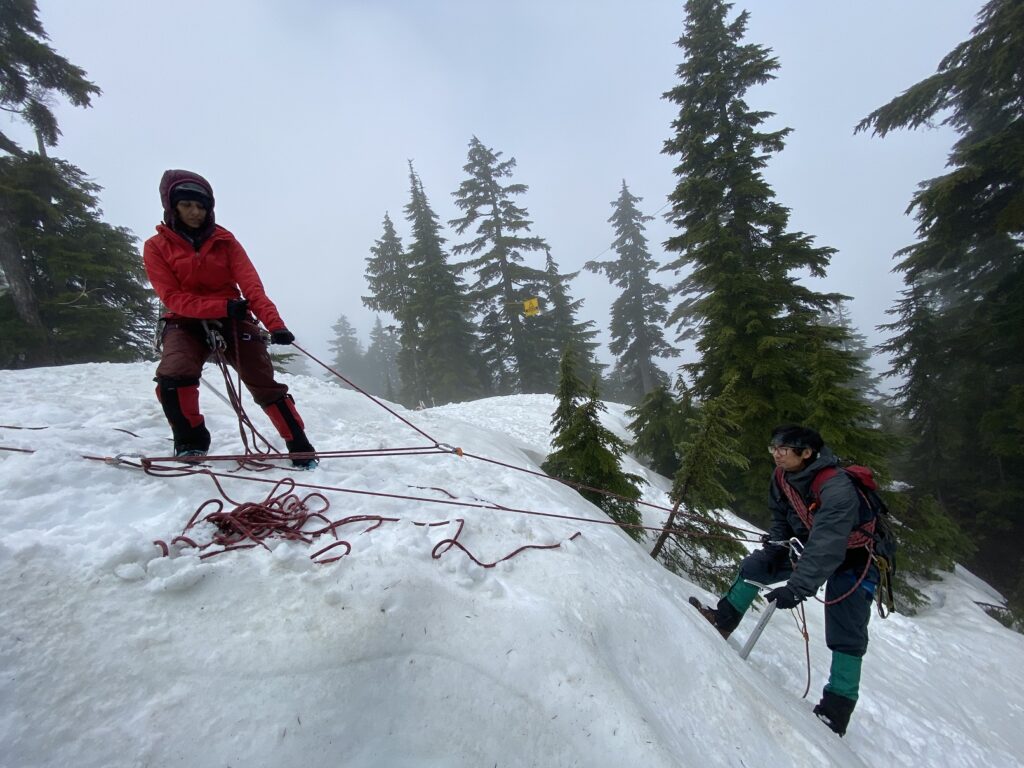
Learning from this setup, our next attempt at 2:1 and 6:1 rescues went better, as Neha went down the slope, and Gabby rescued her. The system was much cleaner and easy to understand.
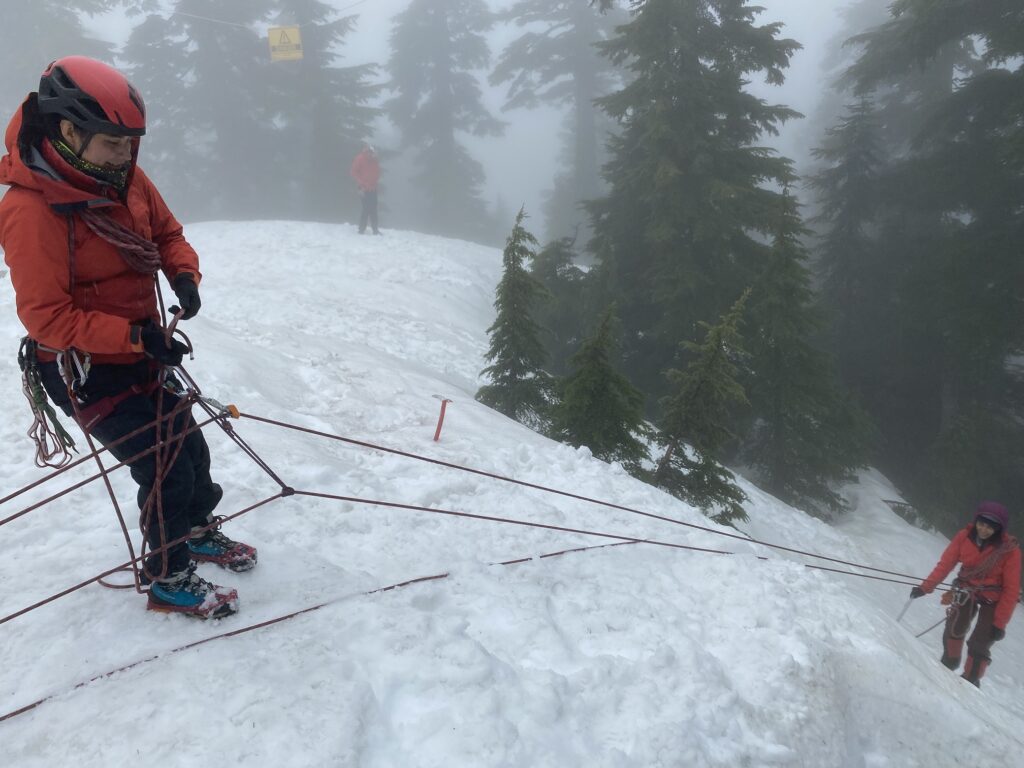
Neha even practiced a self-pulley technique to get herself over the lip of our imaginary crevasse.
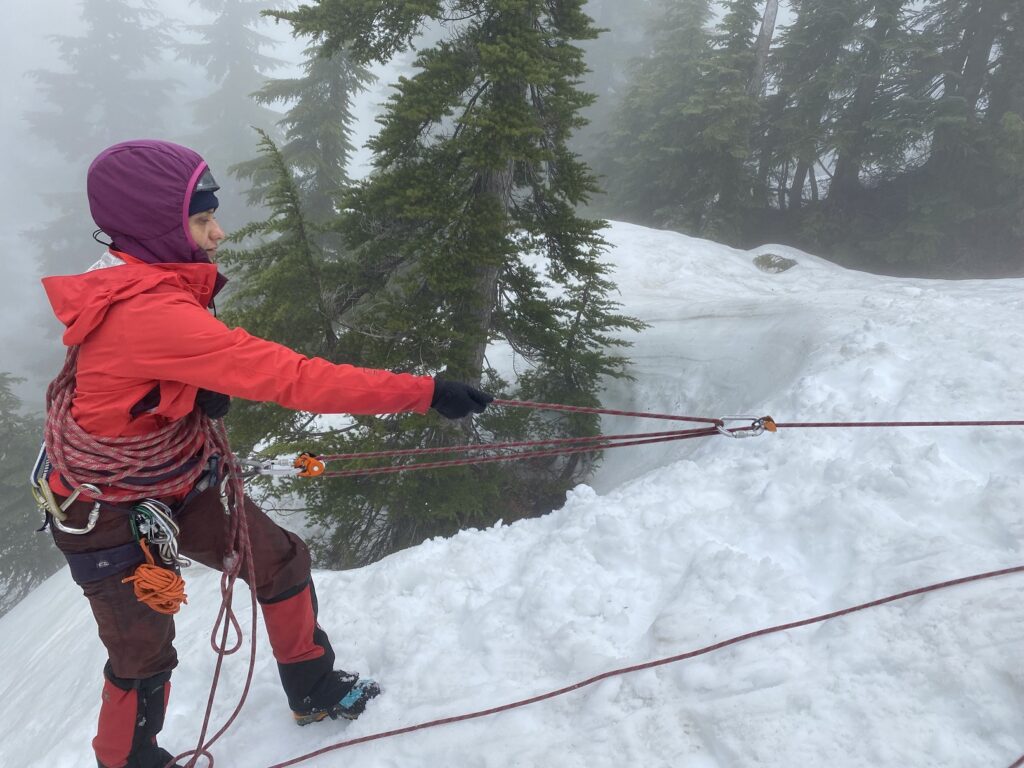
For the last round of crevasse rescue, we had a scenario wherein Gabby was unconscious, and we were rescuing her using a drop loop. I slid a set of Tibloc, Carabiner and Micro Traxion down the loaded rope.
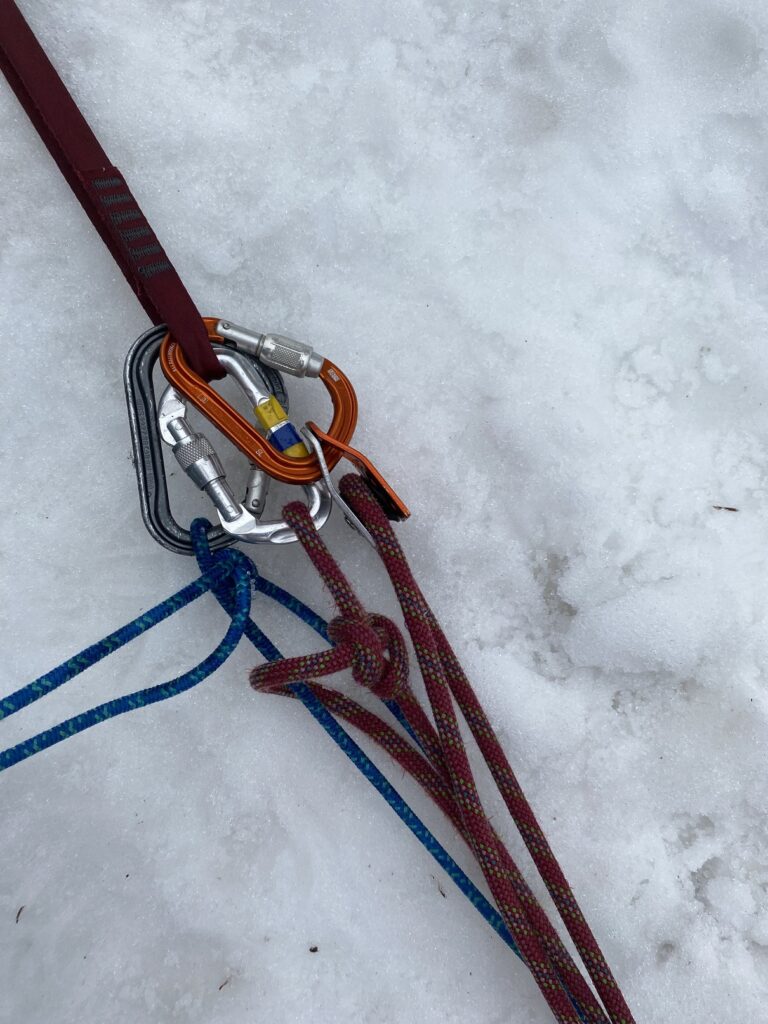
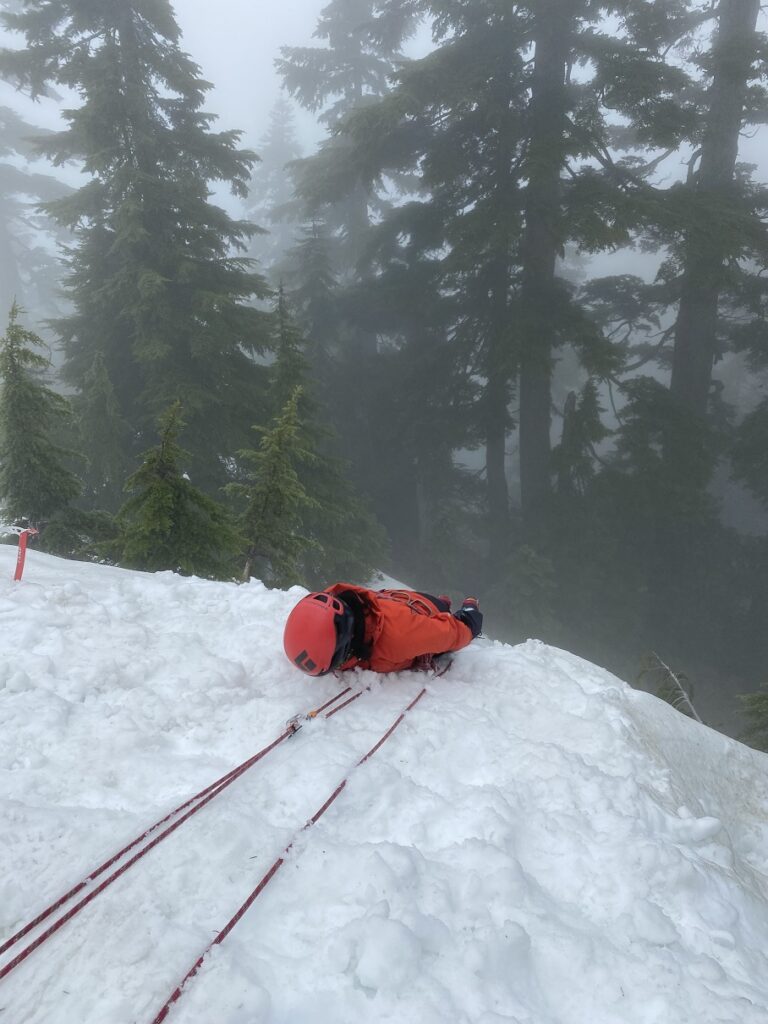
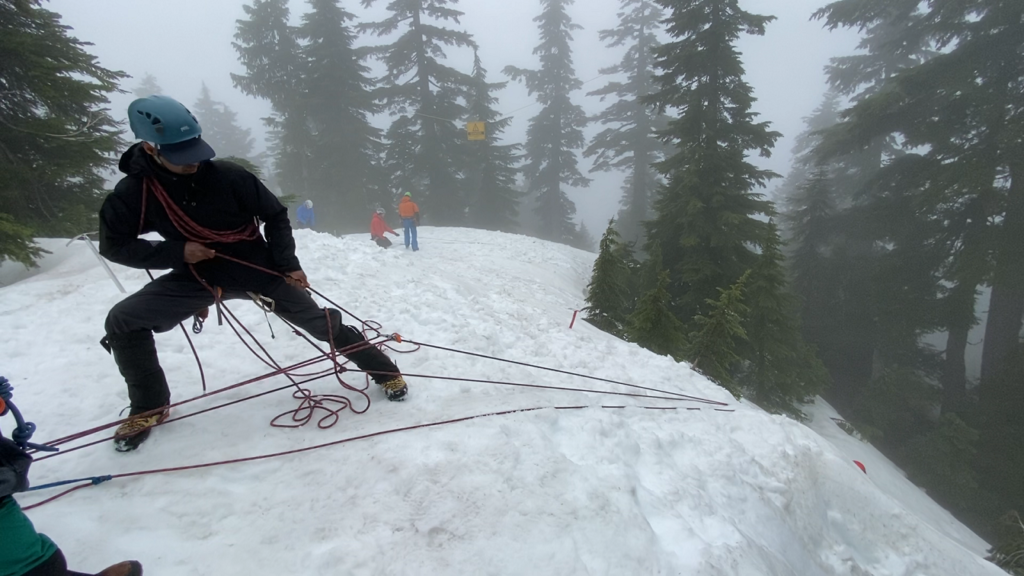
Once the Tibloc was close to Gabby, I started hauling her (2:1). Gabby took her role of an unconscious climber a bit too seriously, so I had to use the 6:1 system to pull her up.
Crevasse Self-Rescue
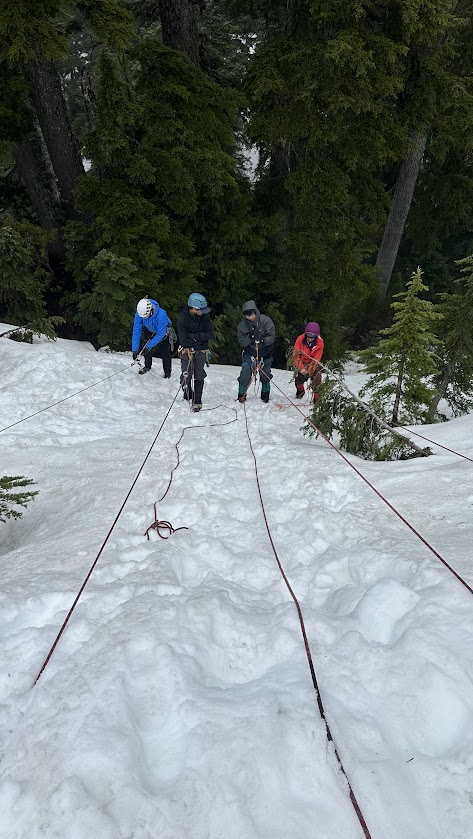
Once everyone had a chance to practice crevasse rescue, we moved on to self-rescue. We tied the rope to the t-slot anchor and tree anchors and rappelled down the slope.
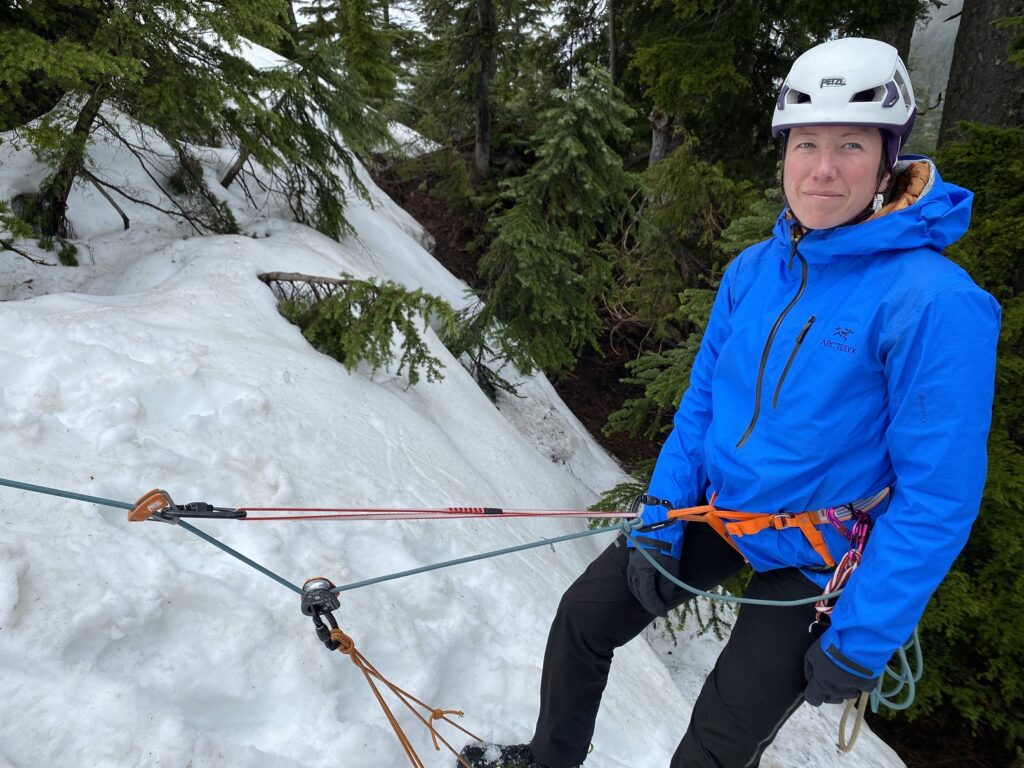
Shannon and I practiced the self-rescue using Tibloc and Micro Traxion. Wes and Neha used a combination of prusiks and Micro Traxion for their self-rescue setup. We lay down on the slope sideways to use our self-rescue setup more effectively. It worked but was not as impressive as demonstrated in this video –
Shannon, Ben, Oudi and Bala also had multiple practice crevasse rescue sessions. Oudi and Bala even did a two-person rope team scenario. Overall, it was a good practice session, as we discussed and practiced different scenarios and approaches to rescue. The best part was figuring out how to undo the mess we sometimes created with ropes and prusiks. This session was better than my previous practice sessions and I learned a lot.
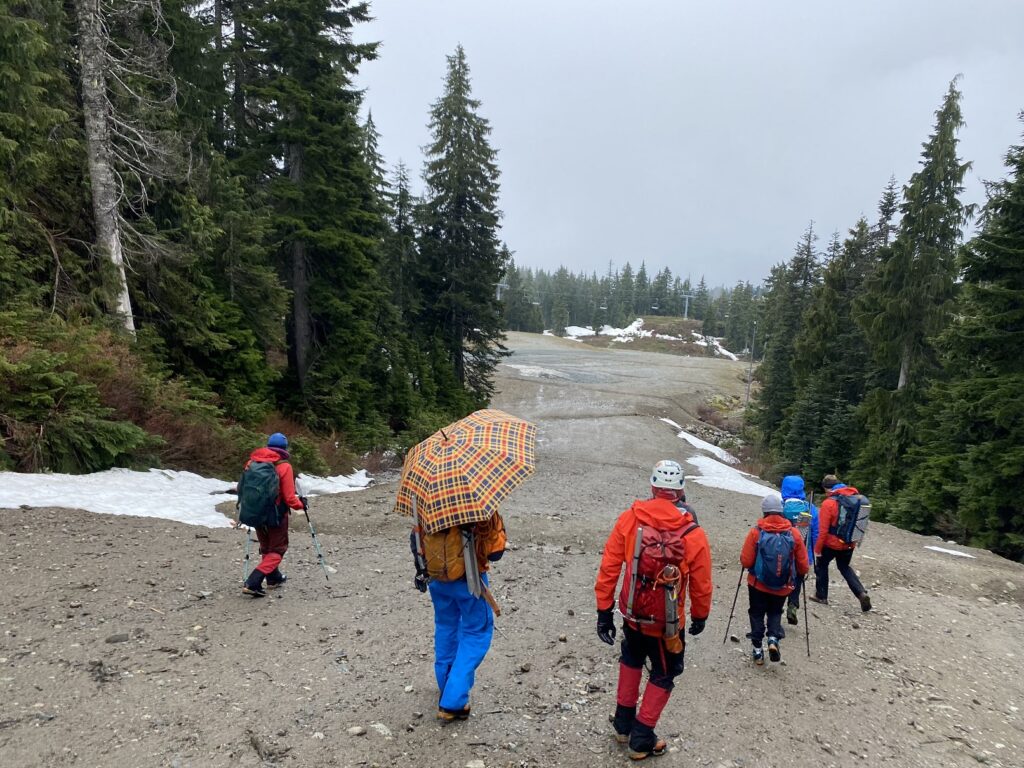
Territory Acknowledgement
I would like to acknowledge that this trip took place on the unceded territory of the Coast Salish peoples, including the territories of the xʷməθkwəy̓əm (Musqueam), Skwxwú7mesh (Squamish), Stó:lō (staw-low) and Səl̓ílwətaʔ/Selilwitulh (Tsleil-Waututh) Nations. I commit to learning about Indigenous peoples and issues and making reconciliation an ongoing effort.
Source: Native-Land
Pronunciation Guide: First Nations.info, A Guide to Pronunciation of BC First Nations
Resources:
First Nations: xʷməθkwəy̓əm (Musqueam), Skwxwú7mesh (Squamish), Stó:lō (staw-low) and Səl̓ílwətaʔ/Selilwitulh (Tsleil-Waututh)
Mount Seymour: BC Parks | Ski Resort
Crevasse Rescue Videos: The Mountaineers | Ortovax Safety Academy | Alpine Savvy
Knots: RMI Guides
Book: Glacier Mountaineering – An Illustrated Guide to Glacier Travel & Crevasse Rescue by Mike Clelland and Andy Tyson
Disclosure: The links I have shared in the post and under the Resources section are not affiliated links.
Did you enjoy reading this post? Please subscribe to get regular updates. Please share your feedback in the comments section below. Thank you!




